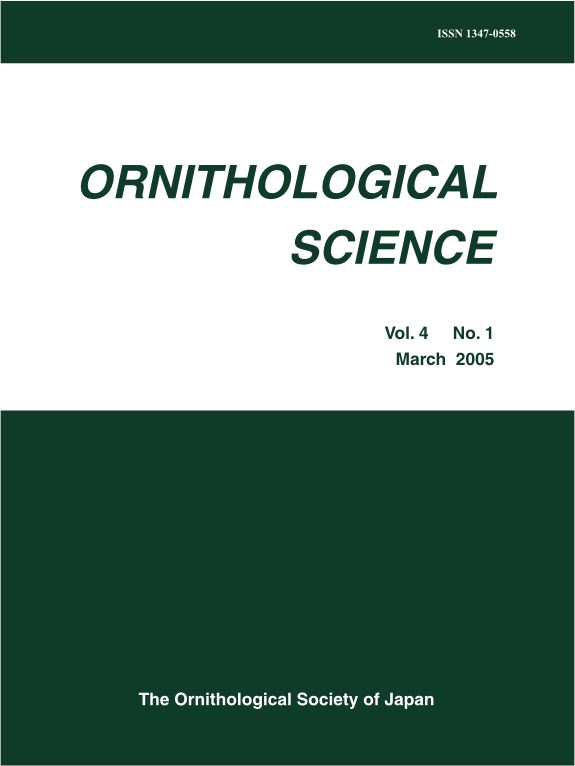Volume 3, Issue 1
January
Displaying 1-9 of 9 articles from this issue
- |<
- <
- 1
- >
- >|
SPECIAL FEATURE Invasive bird species
-
Article type: Others
Subject area: Others
2004 Volume 3 Issue 1 Pages 3-11
Published: 2004
Released on J-STAGE: February 09, 2005
Download PDF (79K) -
Article type: Others
Subject area: Others
2004 Volume 3 Issue 1 Pages 13-21
Published: 2004
Released on J-STAGE: February 09, 2005
Download PDF (1412K) -
Article type: Others
Subject area: Others
2004 Volume 3 Issue 1 Pages 23-32
Published: 2004
Released on J-STAGE: February 09, 2005
Download PDF (357K) -
Article type: Others
Subject area: Others
2004 Volume 3 Issue 1 Pages 33-42
Published: 2004
Released on J-STAGE: February 09, 2005
Download PDF (154K) -
Article type: Others
Subject area: Others
2004 Volume 3 Issue 1 Pages 43-55
Published: 2004
Released on J-STAGE: February 09, 2005
Download PDF (134K) -
Article type: Others
Subject area: Others
2004 Volume 3 Issue 1 Pages 57-67
Published: 2004
Released on J-STAGE: February 09, 2005
Download PDF (85K)
ORIGINAL ARTICLES
-
Article type: Others
Subject area: Others
2004 Volume 3 Issue 1 Pages 69-73
Published: 2004
Released on J-STAGE: February 09, 2005
Download PDF (382K) -
Article type: Others
Subject area: Others
2004 Volume 3 Issue 1 Pages 75-84
Published: 2004
Released on J-STAGE: February 09, 2005
Download PDF (153K) -
Article type: Others
Subject area: Others
2004 Volume 3 Issue 1 Pages 85-92
Published: 2004
Released on J-STAGE: February 09, 2005
Download PDF (273K)
- |<
- <
- 1
- >
- >|
